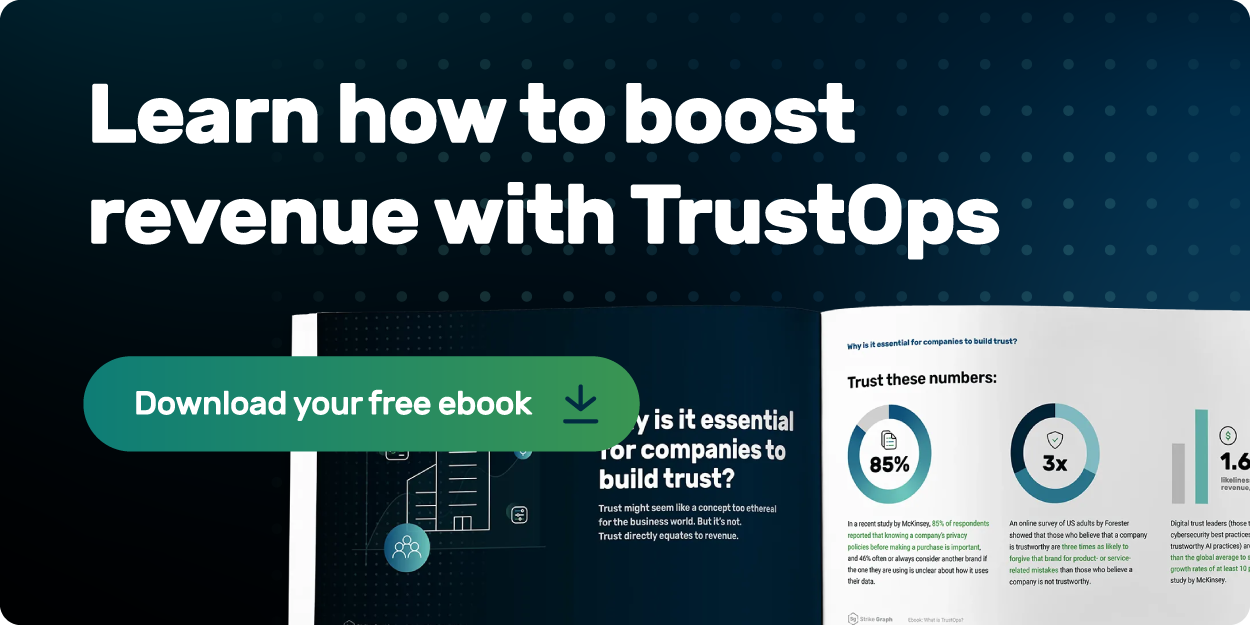When you hear the term cybersecurity compliance, it’s referring to following specific data and security regulations designed to protect the data on computerized systems. Security compliance is often perceived as being overwhelming, but it doesn’t have to be! In this blog, we’ll help you develop a basic understanding of cybersecurity and its risks, putting you in a better position to pursue compliance for security frameworks such as SOC 2, ISO 27001, HIPAA, and PCI DSS.
What are cybersecurity data breach risks?
When data is stored on computerized systems, there’s a risk that unauthorized users could potentially access that information.There are various ways that an unauthorized user could gain access to your sensitive data, such as malware, misuse, human error, or physical theft.
Computerized systems without security protection are the most vulnerable to these data breach risks, which is why data and security frameworks outline detailed processes to protect your data and reduce the likelihood of a breach. Under data and security frameworks, organizations are responsible for protecting the following sensitive data from being exposed: personally identifiable information (PII), trade secrets, intellectual property, legal information, IT infrastructure information, and more. This sensitive information is often considered valuable to third parties, which puts it at high risk for a data breach — and also a main priority for protection under security frameworks. Read on to learn more about the specific types of data that are subject to protection under common security frameworks.
What types of data are subject to cybersecurity compliance?
Data and security frameworks vary from region to region, which means there's a wide range of data covered. While there are diverse types of data protected by these various security frameworks, some frameworks have an overlap in data protection requirements. For instance, ISO 27701 compliance overlaps with GDPR compliance, so it’s a good idea to pursue these certifications at the same time.
Compliance with most security frameworks requires protections for personally identifiable information (PII). This includes protecting any data that can be used alone or in tandem to uniquely identify an individual, such as the following:
- Social Security Number
- First and last name
- Date of birth
- Mother's maiden name
- Biometric information
- Driver’s license number
- Vehicle identification number
- Email address
- Telephone number
Companies working in healthcare and insurance industries will also need to meet additional regulatory requirements for protecting data recognized as personal health information (PHI). Under the HIPAA and HITECH frameworks, PHI is considered any health or health payment data that can be linked to a unique individual and was created or collected by an organization considered a covered entity or business associate. In this context, a covered entity includes hospitals, nursing homes, clinics, or practitioners, while healthcare business associates include law firms, claims processors, medical device manufacturers, databases, and billing companies. Here are specific examples of both physical and electronic PHI that are subject to cybersecurity compliance.
- Healthcare claims
- Documentation of doctor's visits
- Payment and remittance information
- Coordination of healthcare benefits
- Claim status
- Health claims attachments
- Enrollment information in a health plan
- Eligibility information for health plans
- Injury reports
- Personal information generated from premium payments
- Details from electronic funds transfers (EFT)
You’ve learned what risks exist and which types of data are subject to cybersecurity compliance, but now let’s review what could happen in the unfortunate case that sensitive information is accidentally exposed to an unauthorized person during a data breach.

What are the ramifications of a data breach?
The consequences of a data breach can be severe and include everything from financial loss or a damaged reputation to a disruption in operations or even litigation. Data breaches that involve exposed PII can result not only in regulatory fines but also class-action lawsuits. The most shocking recent example is the $425 million class-action settlement against Equifax for their 2017 data breach. Smaller companies can also be heavily impacted by a data breach. A recent class-action lawsuit against Accellion resulted in an $8.1 million settlement.
In addition to the potential ramifications listed above, data breaches can also burden the day-to-day workflows of your company. That’s because there are several processes including reparative actions that need to be put in place after a data breach occurs. Violating compliance requirements is a serious matter, and companies looking to both avoid these consequences and also reap the benefits of cybersecurity compliance must closely follow framework guidelines.
What are the top benefits of cybersecurity compliance?
While there are serious ramifications for violating compliance regulations, there are also several benefits to achieving cybersecurity compliance. Compliance can enhance your company’s sales, revenue, operational efficiency, and customer satisfaction.
- Industry acceptance. A notable benefit of cybersecurity compliance is the ability to work with the companies of your choosing within your industry. Compliance with industry-pertinent security standards is often a prerequisite for B2B companies who act as third-party vendors. A client will often require a potential third-party vendor to fill out a security questionnaire proving compliance with their preferred standards (such as SOC 2) prior to closing a deal. By achieving security compliance, you can prove your knowledge of the latest security measures and make yourself more attractive to potential clients in your industry. This will help drive more sales and give you a leg up on the competition.
- Revenue growth. Demonstrating cybersecurity compliance can dramatically improve revenue for companies. When companies are required by law to follow security frameworks, the financial ramifications for violating these rules can be immense. One of the top benefits of maintaining cybersecurity compliance is the reduced risk of a data breach and the ability to avoid the heavy financial toll of violations.
- Operational efficiency. As companies have adapted to more work-at-home and remote team models in the last few years, many have pursued cybersecurity compliance programs to protect employees from cyber-attacks. Through these programs, companies have built clear and consistent systems for managing data, workflows, and operational processes. Revisiting old or stagnant processes can help to identify roadblocks in operations and provide visibility into more effective strategies moving forward. This also means that compliance can help companies gain a strong advantage in operational efficiency.
- Customer trust and loyalty. Cybersecurity compliance programs signal that your organization is committed to protecting its operational integrity, reputation, and sensitive information. With cybersecurity compliance, your potential customers also have more reason to trust you with their personal information, building loyalty and customer retention.
Creating a cybersecurity compliance program
It’s no secret that cybersecurity has a reputation for being complex. The growing number of security frameworks and the need to track various regulations, processes, and types of protected data are some good reasons why. It doesn’t have to be overly complicated, though. Compliance software like Strike Graph simplifies cybersecurity tailoring the compliance process to your unique business situation. In addition, our multi-framework platform means you can assess risk and implement controls and evidence across multiple security standards so you can achieve your certifications quickly and efficiently.
.jpg?width=1448&height=726&name=Screen%20Shot%202023-02-09%20at%202.57.5-min%20(1).jpg)










